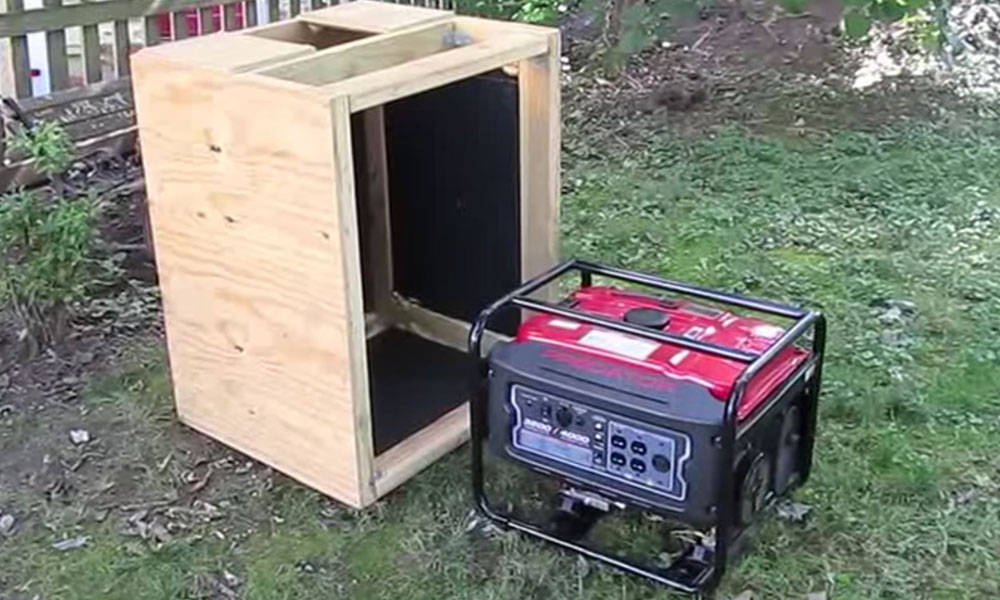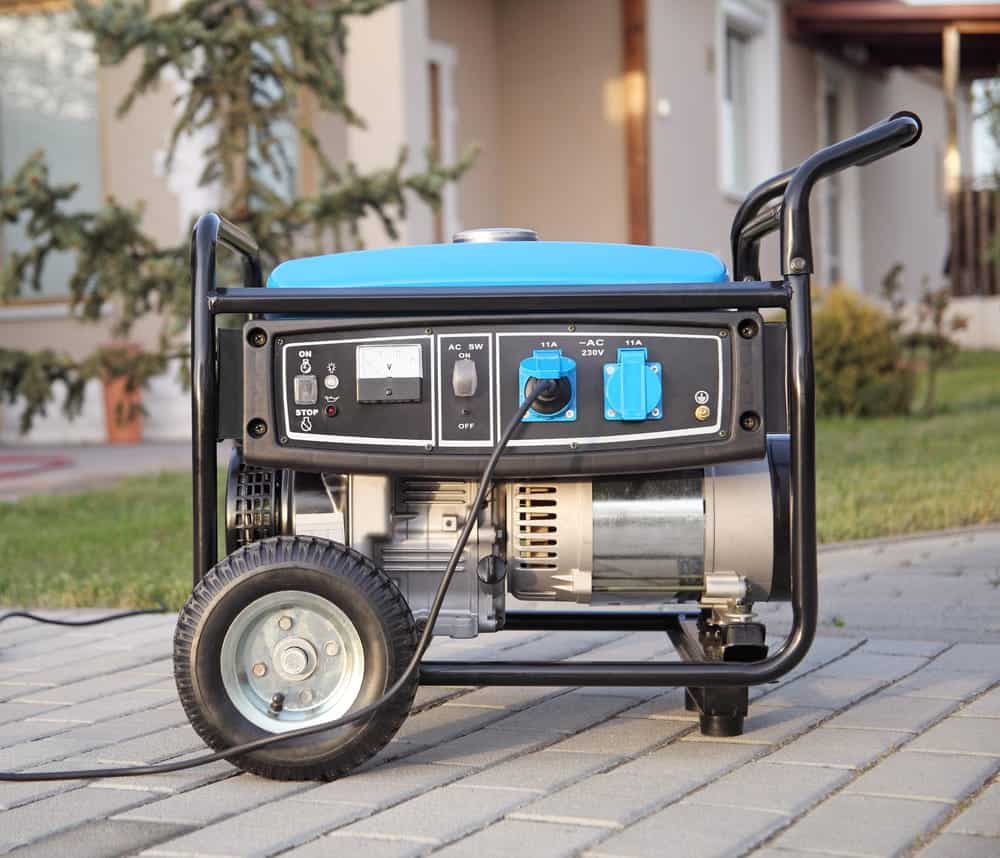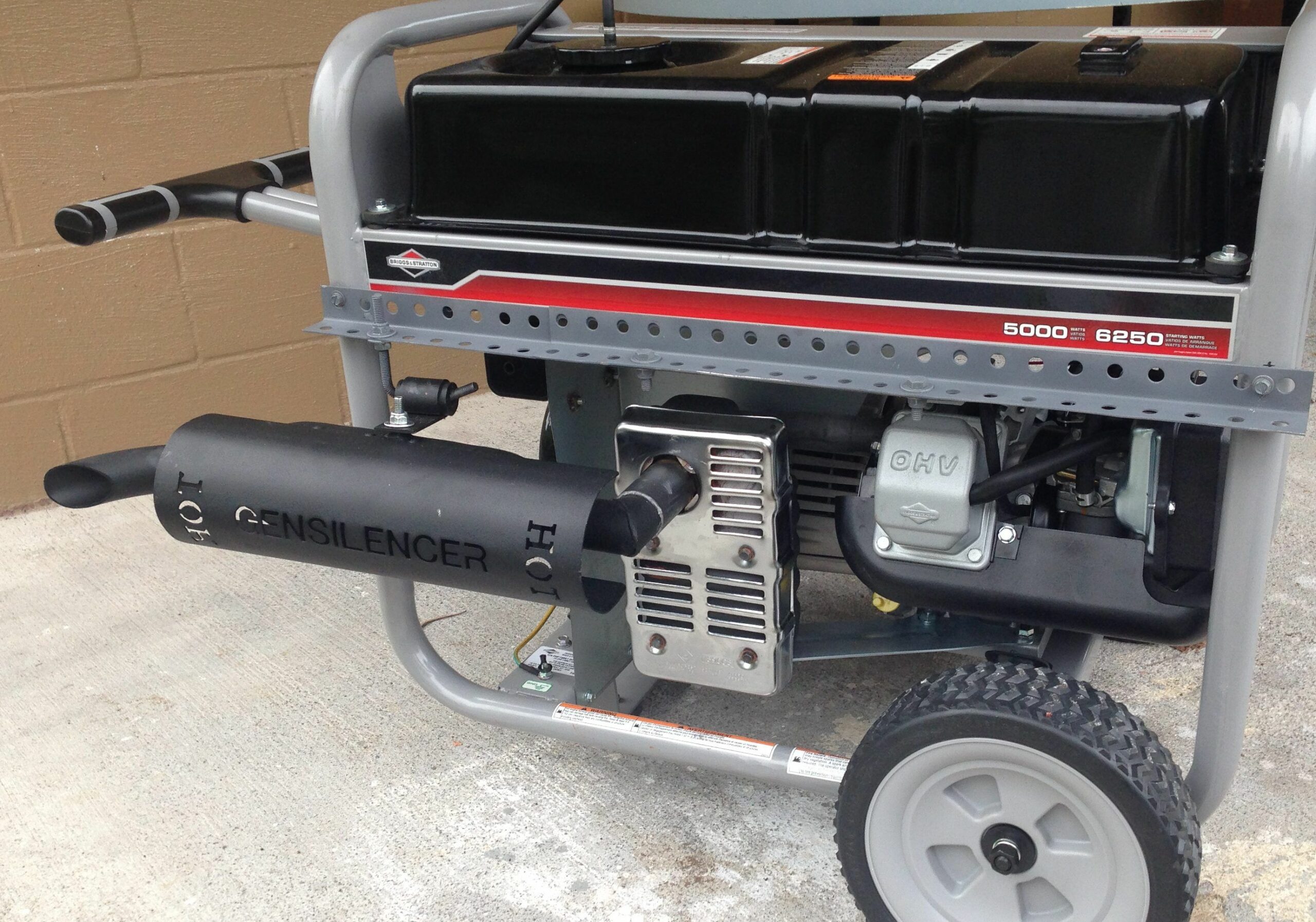Tired of the irritating, crazy noise coming out from your generator? Yeah same here. Getting rid of that super noisy sound is though easy, but is a work of brains. A simple silencer would do the work for you. You can either get it from some marketplace or construct one of your own.
Below is mentioned the approach that got us to make silencer for our generator. Including a whole of seven steps, it’s worked perfectly ever since. So, without any further ado, let’s get started to stop that noise from driving you crazy anymore.
Approach to Constructing a Silencer:
 Before we begin, we need to identify the sources that contribute to the noise. These include the engine, the radiator ventilator, exhaust system and noise rising from its structure. Instead of creating a silencer, you can shut out the noise from these sources individually through a muffler, fan louvers or tube silencers.
Before we begin, we need to identify the sources that contribute to the noise. These include the engine, the radiator ventilator, exhaust system and noise rising from its structure. Instead of creating a silencer, you can shut out the noise from these sources individually through a muffler, fan louvers or tube silencers.
Now, the most feasible way to quieten the generator would be to contain or restrict the sound waves such that they don’t enter the atmosphere. This will show a massive decrease in the noise decibels allowing you to forget for a while that you have a generator installed.
The tool needed for this purpose is referred to as to the acoustic silencer. The best part about it that you can either purchase it or construct one yourself. The latter is fun to do but requires a few skills here and there.
The DIY process comprises seven steps which are as follows:
Step 1: Get Your Measuring Tape Working
First things first, to construct an acoustic box you need to get measurements of the generator and that must be done with great precision. Also, make sure to add a couple of inches on either sides of the generator to accommodate aspects like air circulation and width of the insulation.
Step 2: Ensure Sufficient Air Circulation
Create a ventilation channel at the top and find where to connect it. Make sure to position a duct at the side bottom to bring in clean air. For better or at least healthy working of your generator, proper air flow and ventilation is a must. In case of negligence, there are chances the generator could explode or cause some serious issue costing you thousands of bucks.
Step 3: Absorb the Noise
A generator works by performing mechanical tasks which produce movement and noise. The silencer box will suppress the sound waves but for better compression, use an absorbing surface. It could be a rubber mat or dense rubber sheet. It causes sound waves to remain in a position as sound is all about changes in air pressure.
Step 4: Create the Acoustic Box
Once initial steps are completed, next thing you need to do is to construct the silencer box of your generator. Start by forming a wooden frame and it must be larger in size than the generator. Make sure it has the space for ventilation ducts.
Step 5: Cut the Sound Down
 The most important part till now, install sound insulation. Don’t let the term scare you, the task is easy. Simply add extra space in the box for the sound to dispel in air. You can use Mass Loaded Vinyl to reduce the noise by pasting it on either sides inside the box.
The most important part till now, install sound insulation. Don’t let the term scare you, the task is easy. Simply add extra space in the box for the sound to dispel in air. You can use Mass Loaded Vinyl to reduce the noise by pasting it on either sides inside the box.
To contain the sound inside of the box, you can plywood or any foam-like insulation material.
This would mitigate the noise all the while keeping the box lightweight. The space added will help the material to absorb the sounds.
Step 6: Increase the Layers
You must have heard before, ‘the more, the merrier’. That trick applies here too. Adding more layers of insulation will block out the sound to some extent. You can use foam mat to absorb all the vibrations and reduce the movement of generator.
Step 7: Put the DIY in Order
Moving towards the final steps, set up all the components of the box. To hold it together, you can use bolts, nails and rivets. Make sure the box is fixed such so that it can be disassembled again when needed.
Step 8: Prevent the Generator From Explosion
Also, pay special attention to managing the air flow. As the generator can over-heat and eventually explode otherwise. The ventilation ducts must be placed such that they allow for adequate cooling. And Tada, your silencer box is ready.
Get a DIY
 If you still think the noise is too loud and your ears can’t adapt to the sound then here’s another trick for you. Construct a DIY generator silencer to match with your silencer box. This will condense the noise up to twenty decibels making it significantly reduced.
If you still think the noise is too loud and your ears can’t adapt to the sound then here’s another trick for you. Construct a DIY generator silencer to match with your silencer box. This will condense the noise up to twenty decibels making it significantly reduced.
Although most engines originally come fitted with a muffler, these haven’t been observed to be as effective. What a silencer generally does is to deflect the sound waves being emitted from the engine and leaving through the exhaust system. Since it is the part that makes the most noise.
The steps are as follows:
- Check your generator’s efficiency to work out the exhaust system.
- Build an adequate case for the exhaust vent depending on its width. You can either bring in metals or other appropriate materials.
- Install an insulation device inside the silencer and stick it up with any adhesive material. Also, ensure enough space to avoid poisoning inside the device.
- Assemble the silencer in order with the generator by wielding the pipes together.
- Turn the generator on and ensure there’s no sound leakage at all. The silencer will absorb most of the sound and leave the generator soundless.
This technique should help block the sound to a great degree leaving behind sound from the engine only.
Conclusion
The next time someone complains about their generator making noise, you know how to help them. Noise can really get the better of us most of the times but now we have silencers to cancel them out.
That brings us to the end of the post. We hope you find this article to be helpful. Have Fun!
